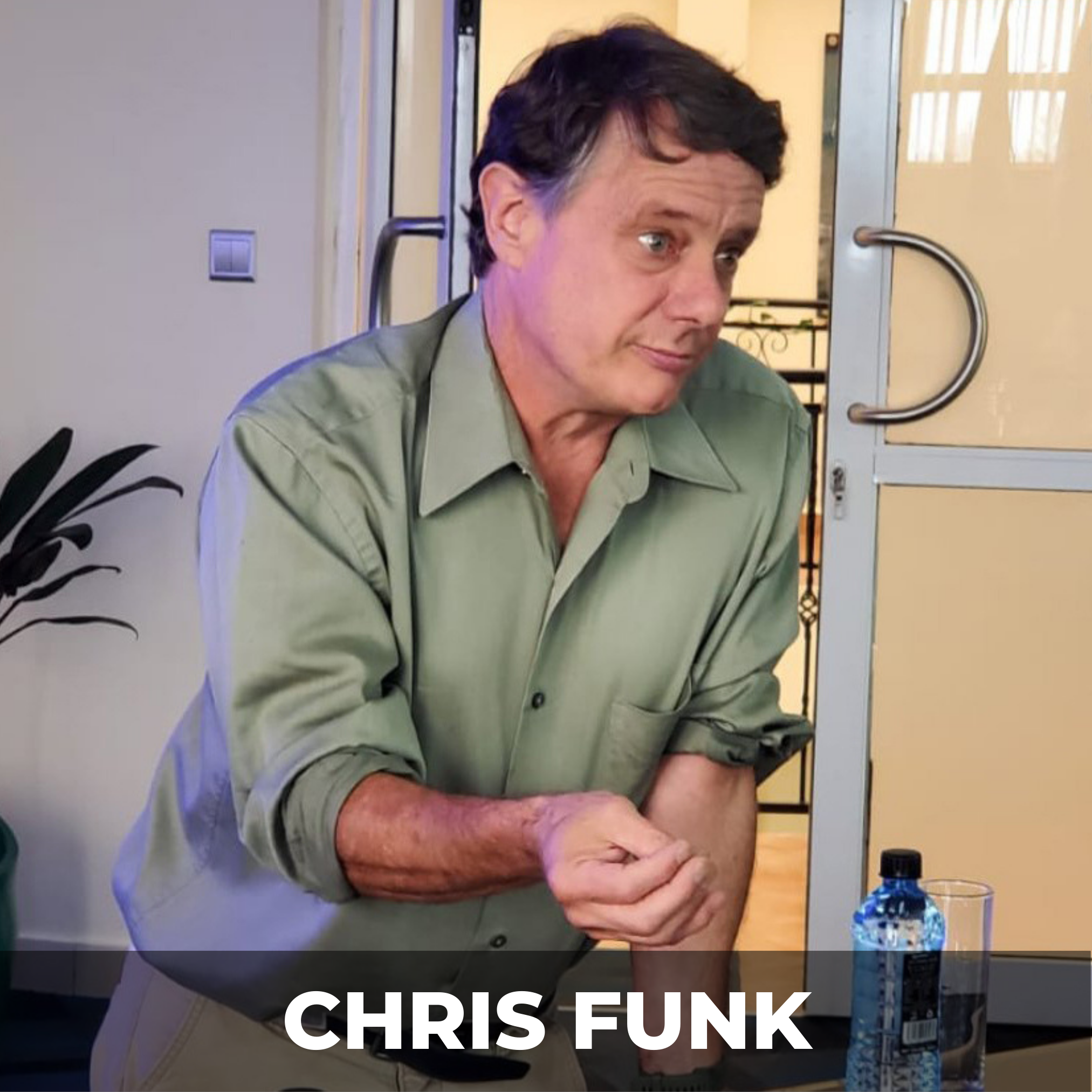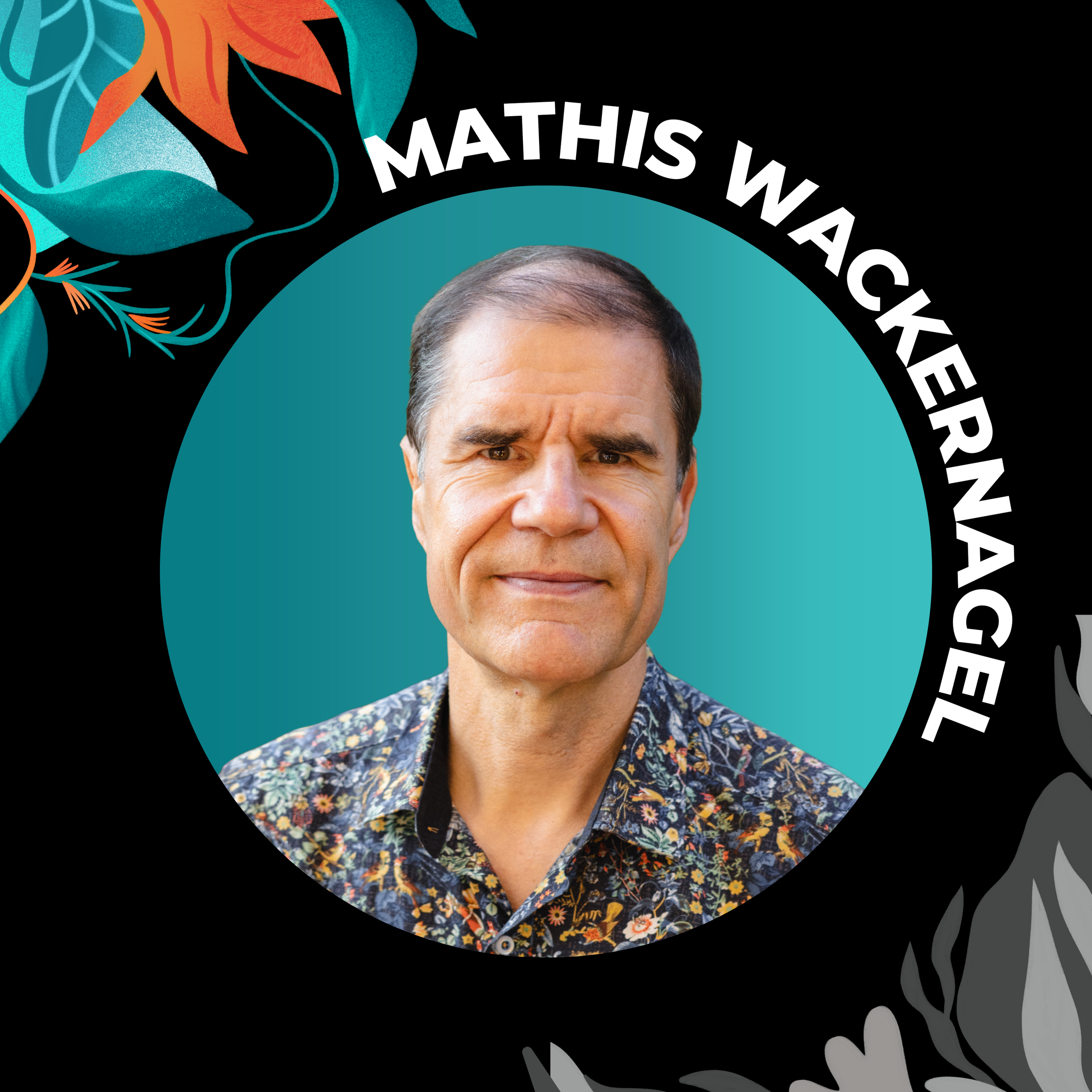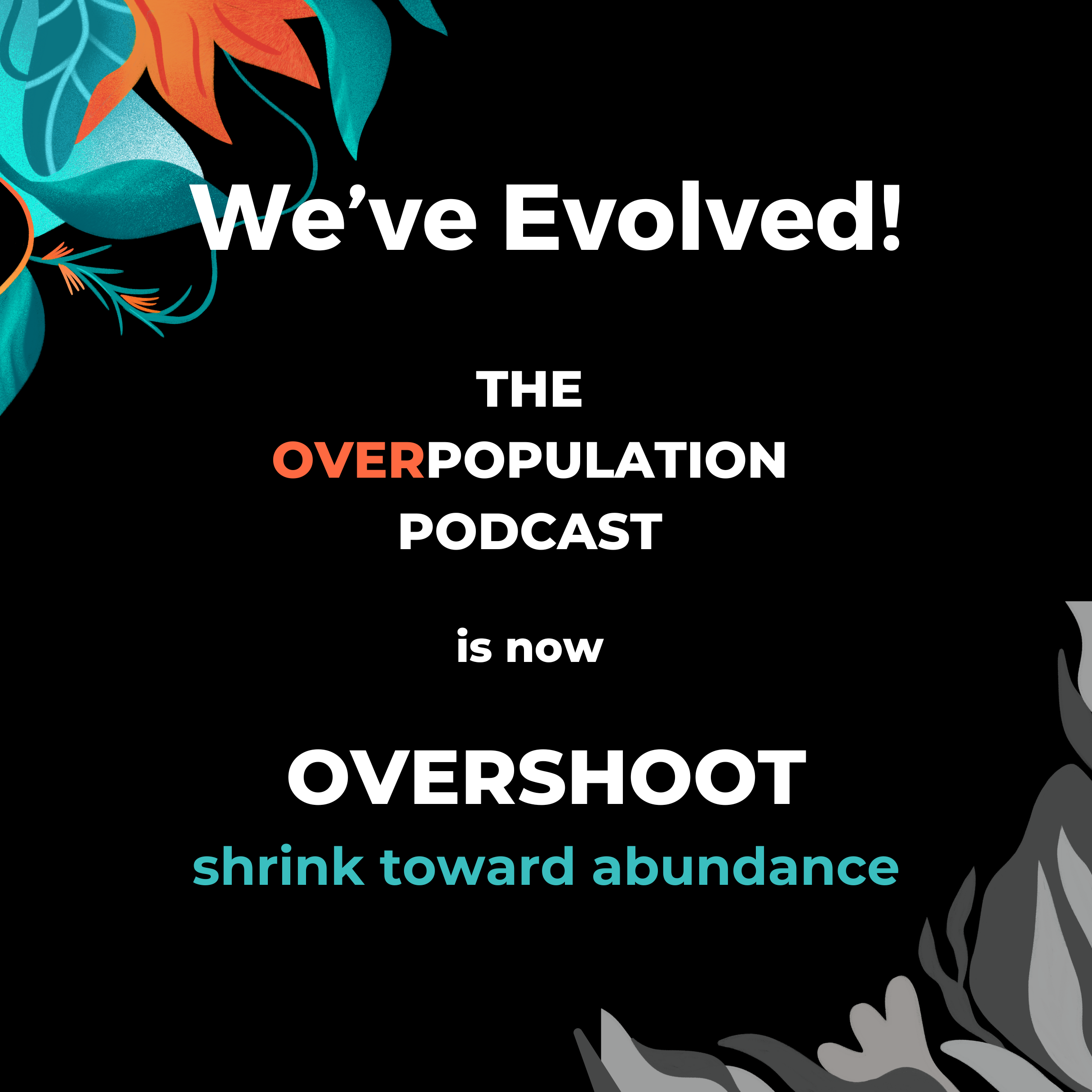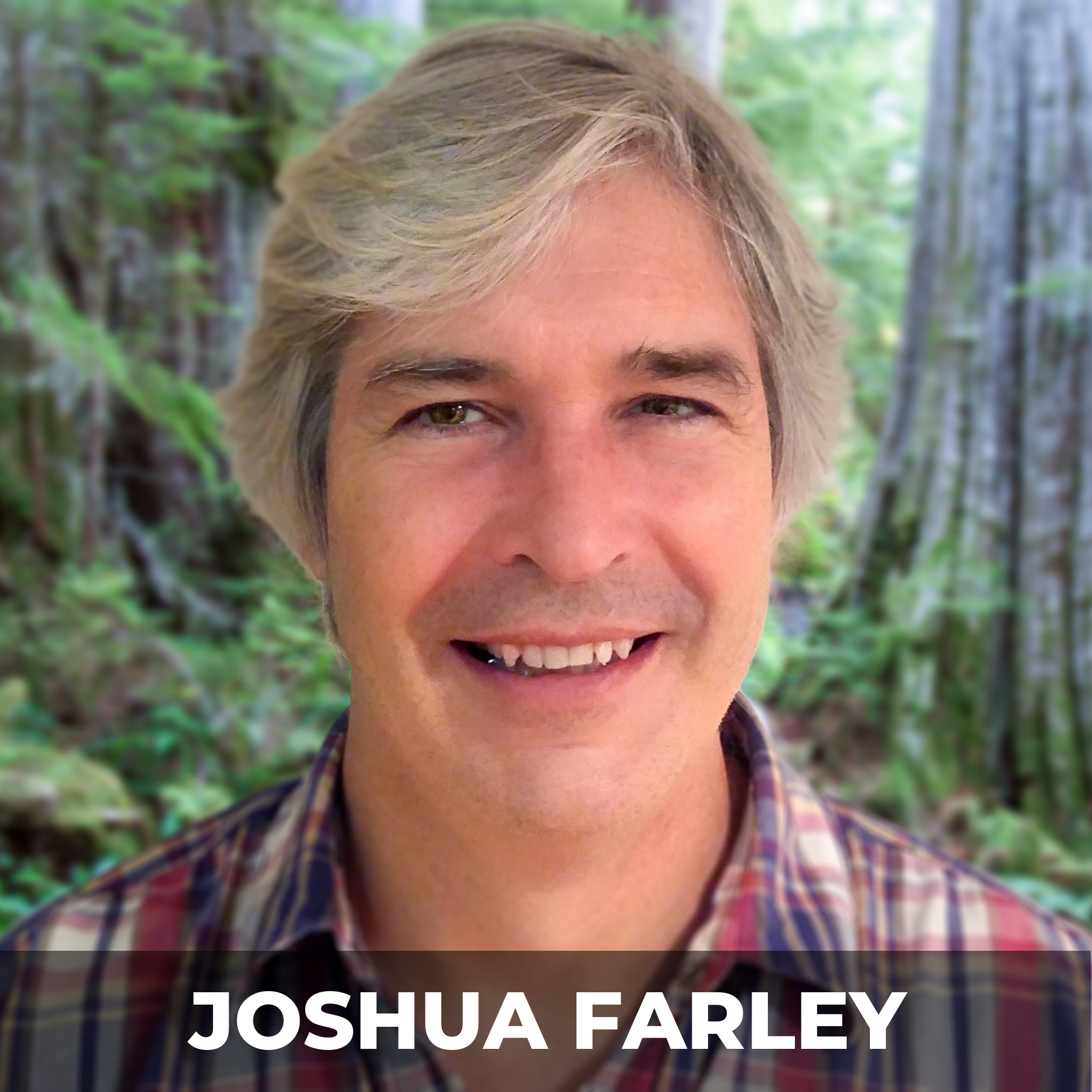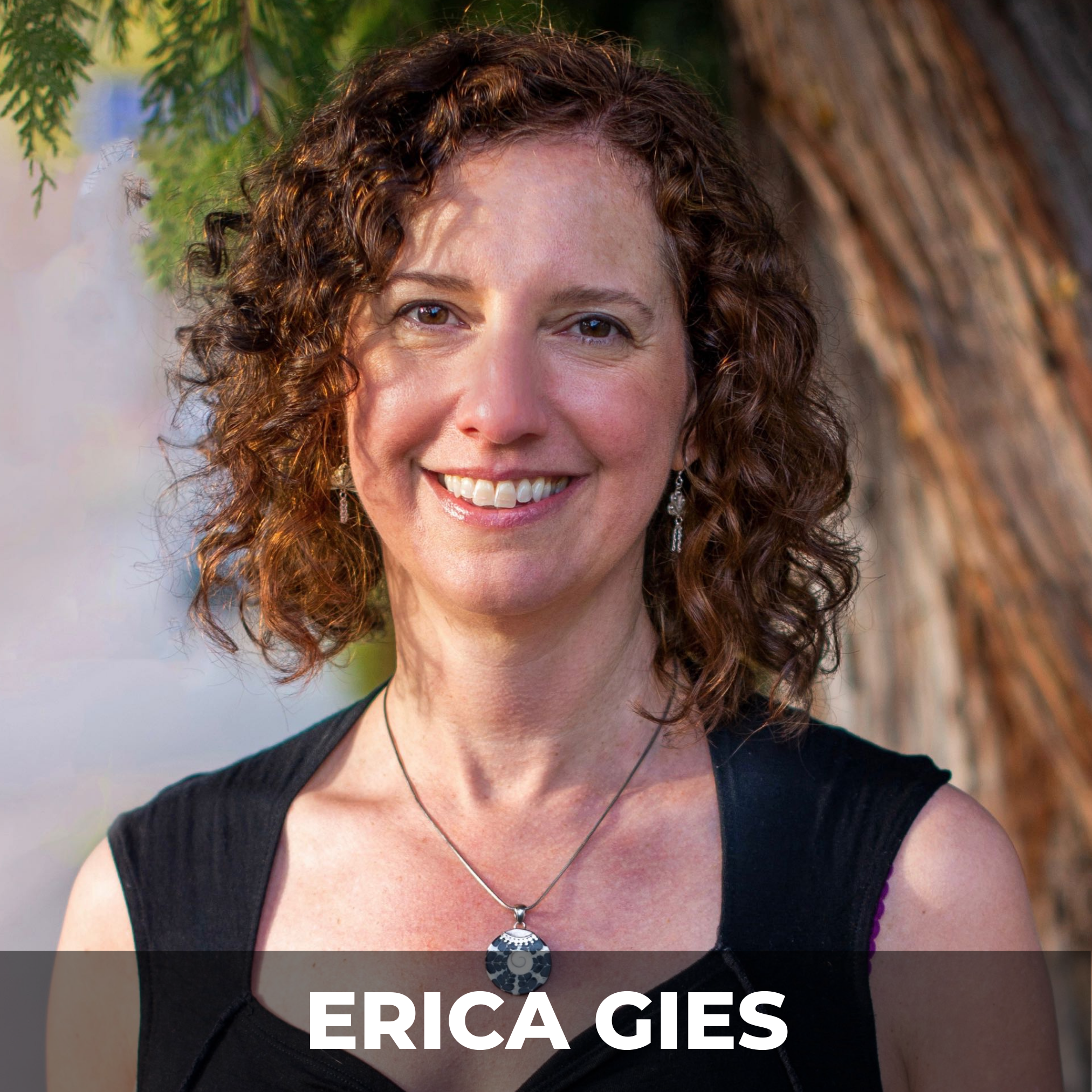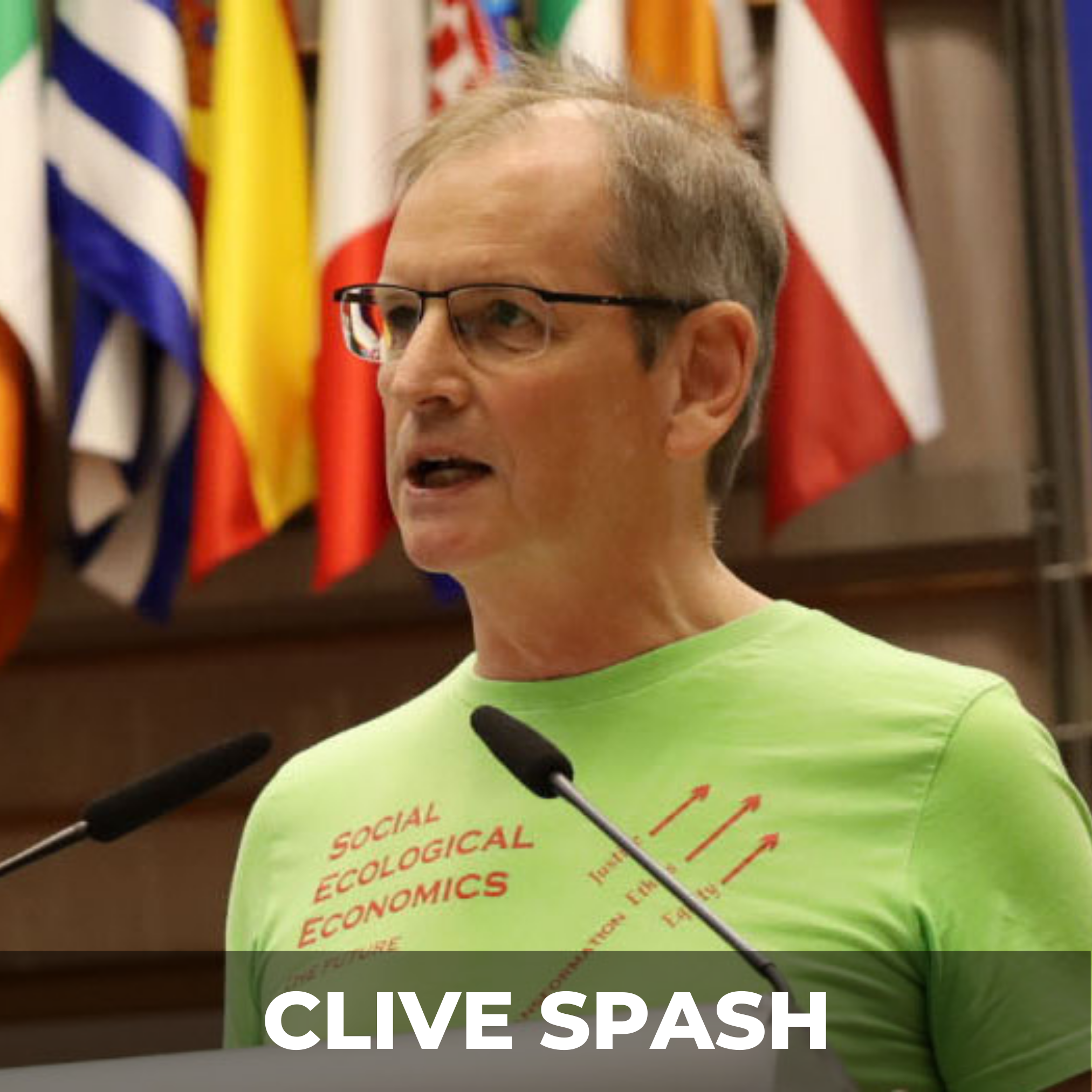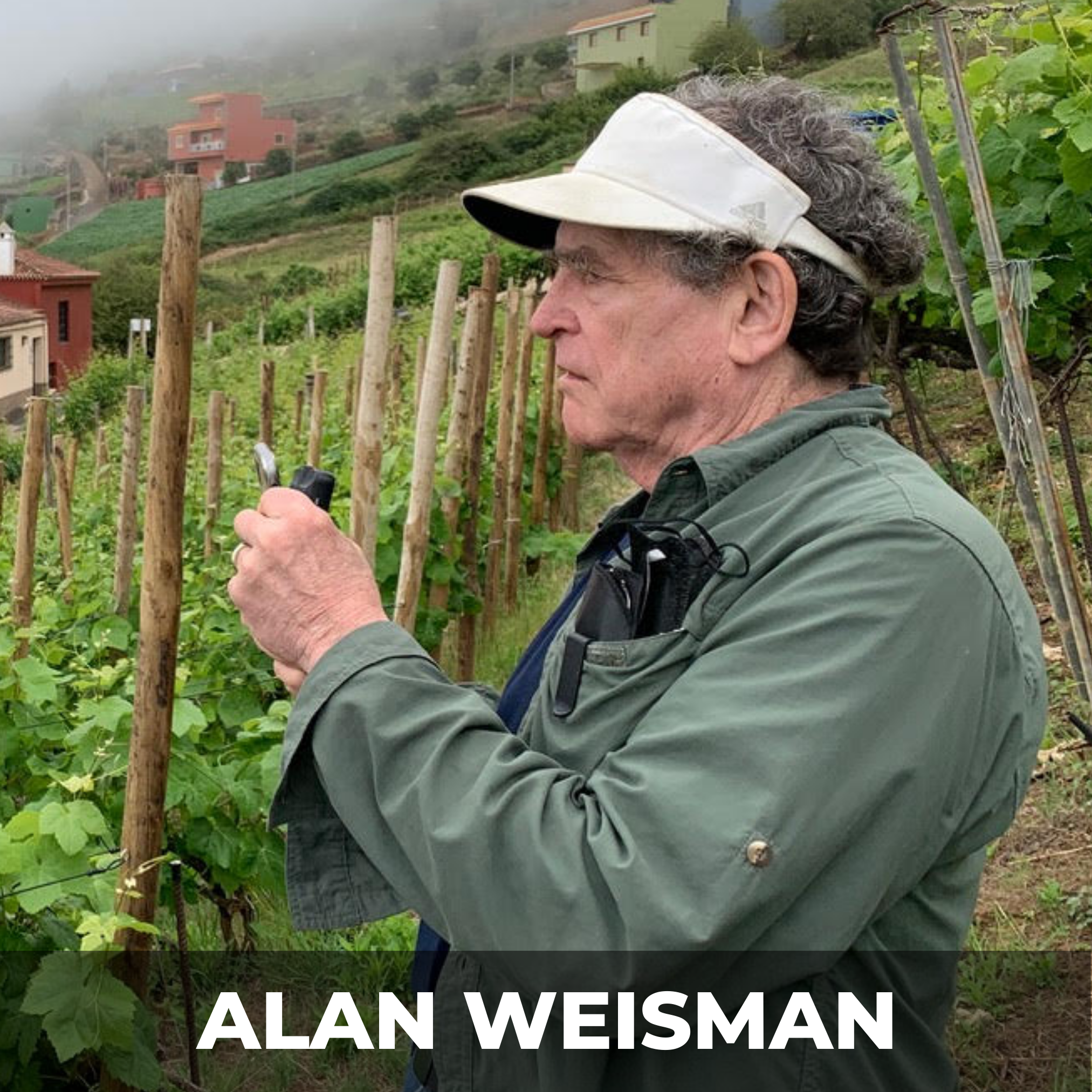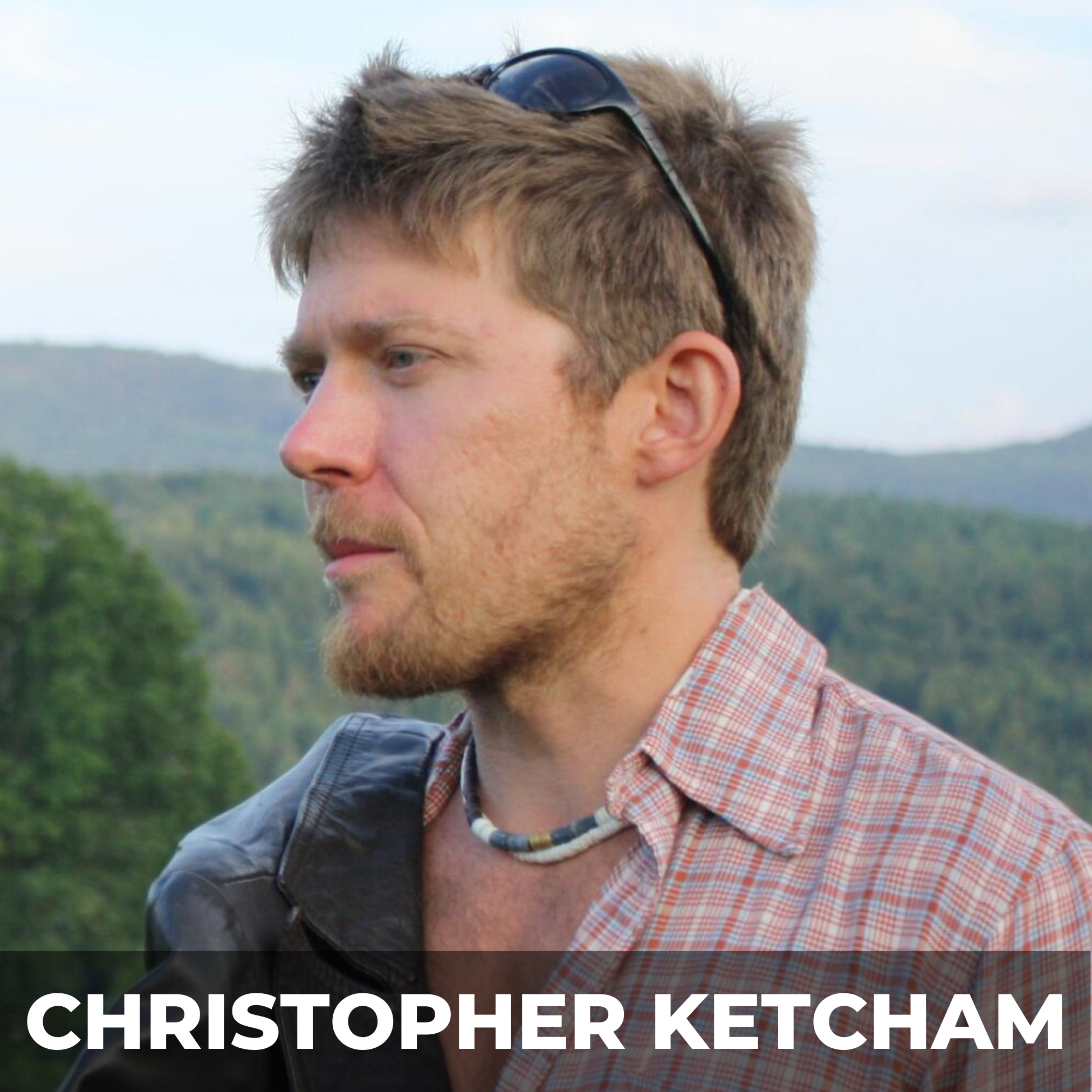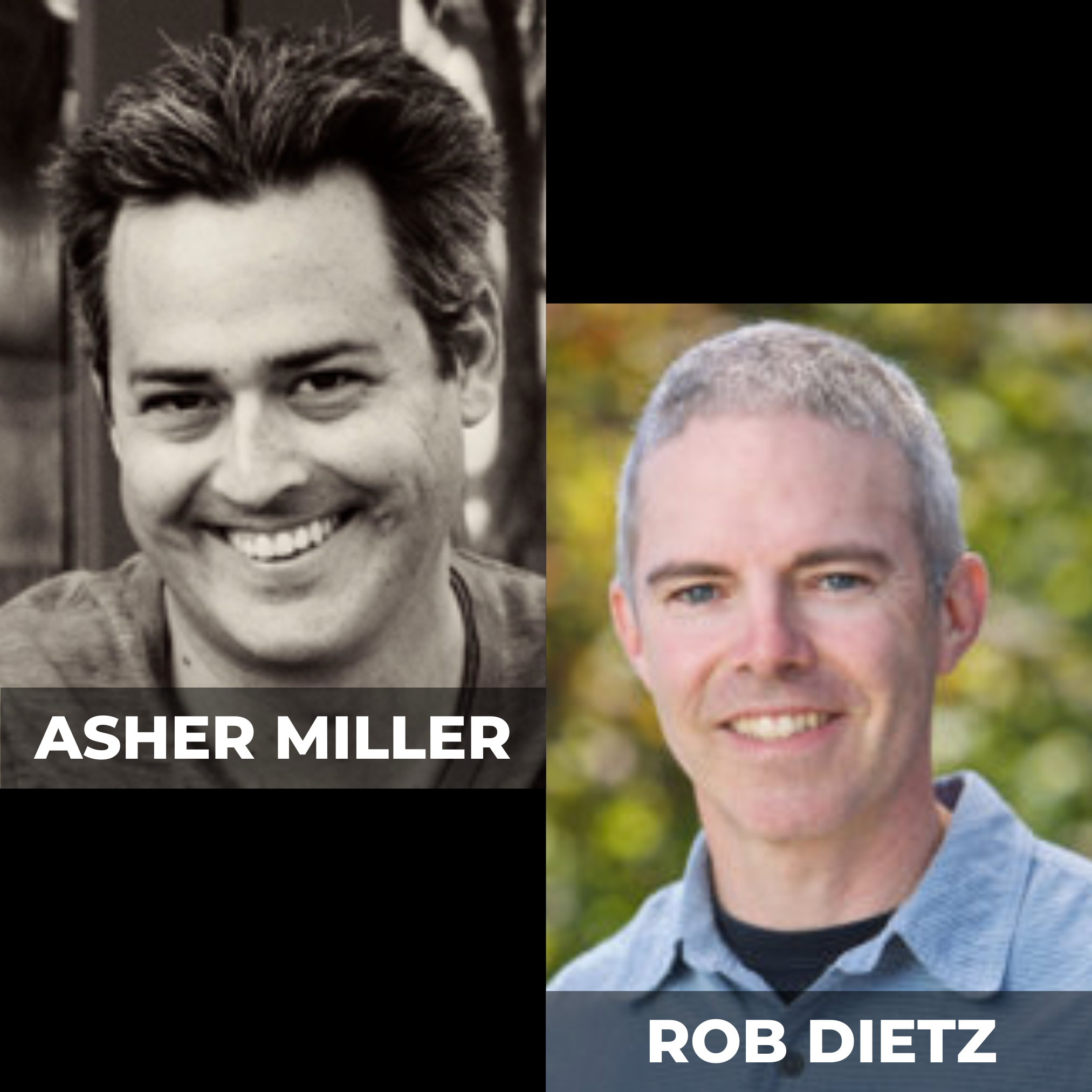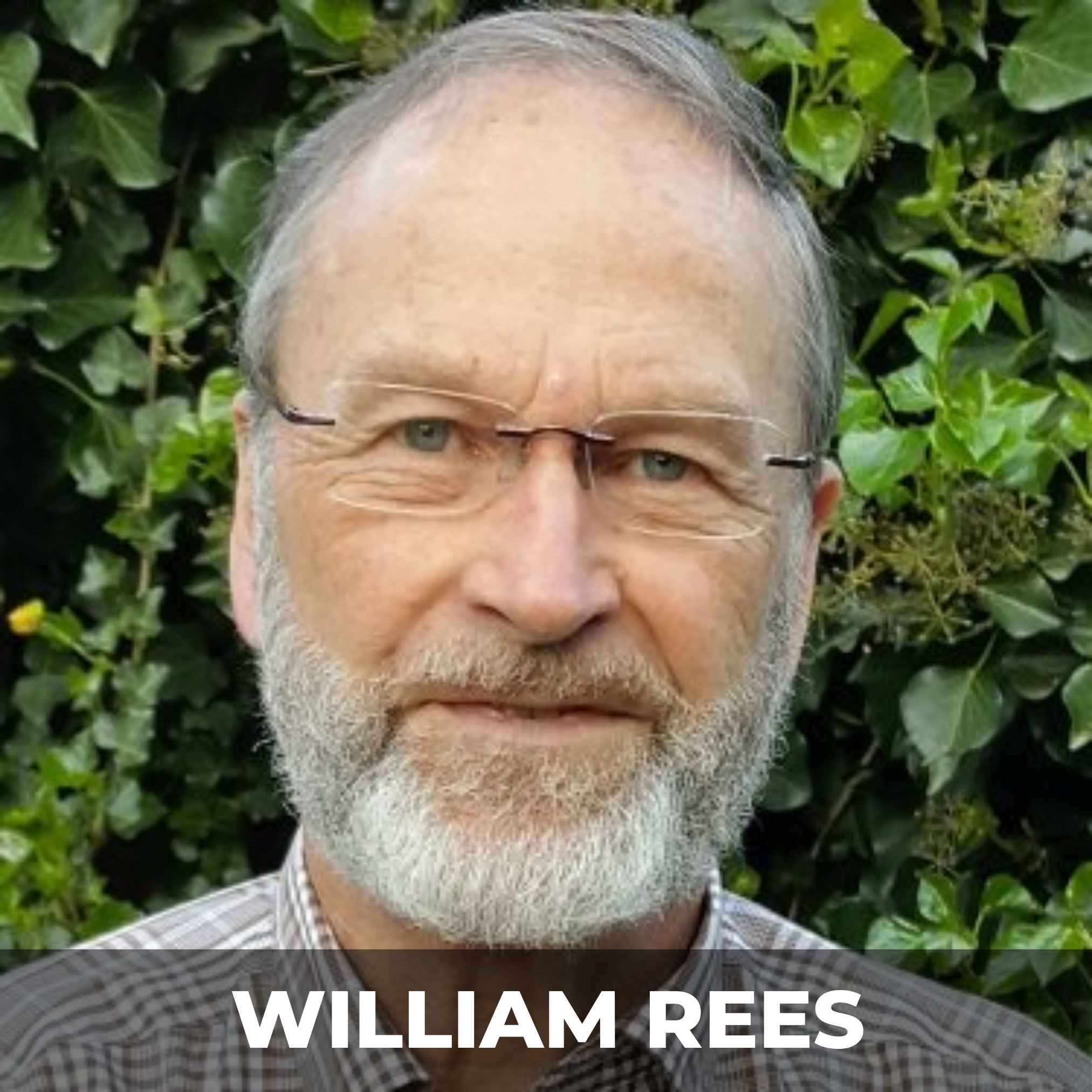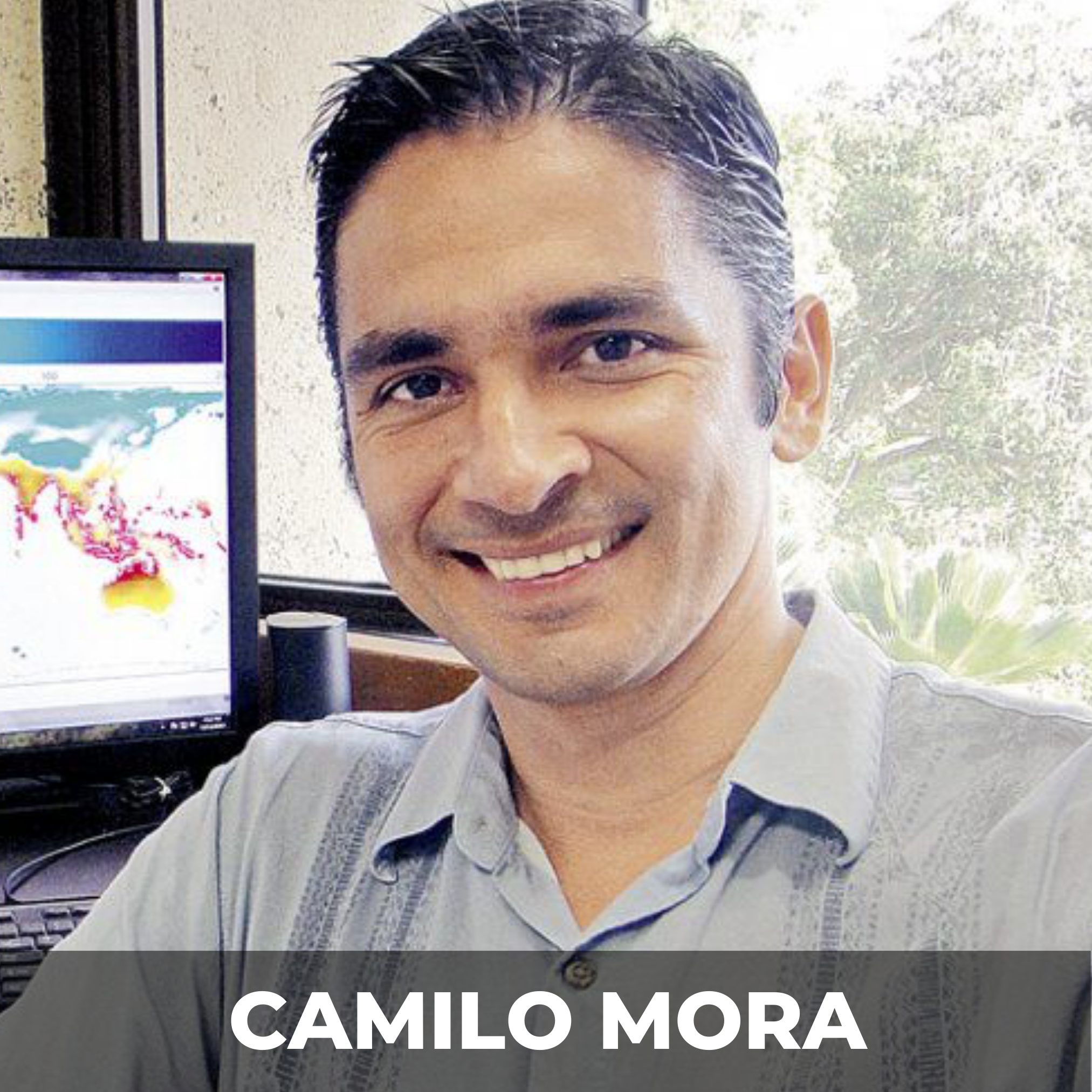Being Better Together | Using Early Warning to Reduce Exposure to Climate Extremes
Note: Despite the slightly compromised sound quality, Chris offers absolutely essential insights.
In this episode, we talk with climatologist and director of the Climate Hazards Center, Dr. Chris Funk, about the intersection of population growth and extreme weather events. With a focus on regions vulnerable to extreme heat and drought, particularly in Africa, Chris has helped create early warning systems that reduce suffering and save lives. Highlights include:
How rapid population growth in already hot and humid regions of Africa increases the number of people exposed to extreme heat, drought, and flood;
What Funk’s research reveals about how El Niño and La Niña events are amplifying extreme weather in the Global South and their impacts on food security;
Why early warning systems, particularly in Africa, are crucial for predicting and mitigating the impacts of droughts and extreme temperatures;
Why localized responses and infrastructure resilience are key to minimizing the humanitarian impacts of extreme weather events.
MENTIONED IN THIS EPISODE:
-
Chris Funk 0:00
Exposure to extreme temperatures is obviously tied to population growth, right. As you get more people, there's more exposure, and there's a lot of areas that have really rapid population growth. In a place like the Sahel or India that is already really hot and humid and already has 2 billion people, you're talking about a huge amount of exposed population. I'm just kind of shocked at how many people that seem to think that population growth is a thing of the past.
Alan Ware 0:30
In this episode of the Overpopulation Podcast, we're joined by climatologist, Dr. Chris Funk. We'll talk with Chris about his groundbreaking work on predicting extreme weather events and how these insights are helping protect increasingly vulnerable populations from the twin threats of climate change and population growth.
Nandita Bajaj 0:58
Welcome to the Overpopulation Podcast, where we tirelessly make ecological overshoot and overpopulation common knowledge. That's the first step in right-sizing the scale of our human footprint so that it is in balance with life on Earth, enabling all species to thrive. I'm Nandita Bajaj, co-host of the podcast and executive director of Population Balance.
Alan Ware 1:21
I'm Alan Ware, co-host of the podcast and researcher with Population Balance. We are proud to be the first and only nonprofit organization globally that draws the connections between pronatalism, human supremacy, social inequalities, and ecological overshoot. Our mission at Population Balance is to inspire narrative, behavioral, and system change that shrinks our human impact and elevates the rights and wellbeing of people, animals, and the planet. And now on to today's guest. Chris Funk is an applied climatologist, humanitarian earth scientist, and director of the University of California Santa Barbara's Climate Hazards Center. He has written many papers as well as books on climate change and drought early warning. His most recent book is Drought, Flood, Fire: How Climate Change Contributes to Recent Catastrophes; and Drought, Early Warning, and Forecasting. Chris leads the Climate Hazards Center's development of widely used satellite enhanced temperature and rainfall data sets. These products have been specifically designed for the global south, where a growing number of people face more extreme weather and climate. These efforts inform the Famine Early Warning Systems Network and other humanitarian relief agencies. Chris works closely with partners in Eastern and Southern Africa seeking to enhance their early warning and adaptation capabilities. New research focuses on mapping and anticipating extreme temperatures as well as more energetic and damaging climate extremes such as El Nino and La Nina events. Chris's cutting edge research, which has supported the prediction of many East African droughts has been recently discussed in the Washington Post, The Economist, The New York Times, Science, Nature, and the BBC. And now on to today's interview.
Nandita Bajaj 2:10
Hi Chris. We're really excited to have you with us today. You're a leading expert in climate science, and we're eager to hear more about how your work has been crucial in developing tools to both predict extreme weather and also to mitigate its impacts on people, especially in vulnerable regions. And we really appreciate how you've included the effects of population growth on these extreme natural events, and in turn, how population growth makes more people vulnerable to extreme events. Your efforts have not only deepened our understanding of climate dynamics, but as you will speak to today, also sparked meaningful action to tackle the humanitarian challenges posed by climate change. We're really happy to have you. Welcome to the conversation.
Chris Funk 4:04
Thanks so much for inviting me, Nandita, and for all you do to bring a light to these issues. It's really important.
Nandita Bajaj 4:09
And Chris, you're the director of the Climate Hazards Center at UC Santa Barbara, and you recently published a book titled Drought, Flood, Fire: How Climate Change Contributes to Catastrophes. And at the beginning of the book, you provide such a wonderful description of all the reasons why planet Earth is so truly special for creating conditions conducive to life. Could you start by summarizing this set of delicate balances that make earth such an incredible and yet also fragile place for life in the universe?
Chris Funk 4:44
Yeah, thanks for that question, Nandita. And it's interesting that a lot of Earth scientists really get engaged because they love the Earth. We might get later on involved in things like climate change, research, activism but, you know, it usually starts with just looking up at the clouds and kind of thinking, gosh, that's really beautiful. And you think about what is driving a cloud, it's this balance of forces that creates these beautiful, complex patterns that support life. And there's a balance of these forces, like all the way to the galactic scale, between dark matter and the force of gravity, all the way down to a individual plant that has to make these choices about opening or closing these little doors on the leaves called stomates. And then in the kind of middle of that area is a place where climate scientists will tend to spend a lot of their energy. And at the sort of global scale we have a balance, of course, in radiation, between energy coming in and energy going out. And then there's a lot of important balances at the regional scale, where we have semi-global wind patterns that transport heat and moisture from the tropics up into the mid latitudes, that kind of even out the temperature gradient, bring us life-saving rain. And then, of course, we have weather events from day to day that are also these pressure gradients. And you know, that's the kind of things that I study, mostly starting from the climate and weather scale down to changes in vegetation. And of course, unfortunately, we're seeing big imbalances in many of those systems. And of course, the radiation imbalance that's causing the earth to warm, which then creates more intense air pressure and temperature gradients, giving us more extreme weather and climate events. And then, of course, at the kind of leaf level, a warmer atmosphere, those little doors, the stomates, every time they open up to draw in carbon dioxide to fuel photosynthesis, they lose more water vapor. So we're seeing more desiccation, also more wildfires. One thing that I would like to bring up and that I talk about in my book, and that I think a lot of people, having read it, thought was one of the most important and compelling kind of parts of it is that I try to describe how shallow the atmosphere is. And as a climate scientist, I think this is one of the things that we understand that most people don't, because we walk outside our front door, we look up the infinite sky, right? This is the kind of imagery we get from poetry, but the atmosphere, it really gets very, very thin after about 10 kilometers. There's just not much 'there' there. And so it's a lot easier for us to mess with our atmosphere and our radiative balance than we realize.
Alan Ware 7:37
Right, I think you in the book, do you mention it's the paint on a ping pong ball or a tennis ball or something of that scale?
Chris Funk 7:46
Yeah, something like that. Yeah. In the earlier version of the book, I described it as like we were chain smoking in a Citroen with the windows rolled up. But my editor decided that was not appropriate and had to take out that.
Alan Ware 8:03
Yeah, and the fact that it is only 10 kilometers or six miles up of having much matter your book made it much more clear to me how much all that emptiness of space is really required through gravity to coalesce the stars and the planets, and the fact that there is something is very special, but it kind of requires all of that emptiness.
Chris Funk 8:26
Yeah, that was maybe, for me, the most enjoyable part of the book to write, because we have this idea of heat death, this idea that the universe is this terrible, empty place. And I think it causes us to turn away from science, honestly. But yeah, in that chapter, I kind of had this aha moment where I realized that if you want to have a negentropic planet, right, a planet that basically is absorbing energy and building complexity, then essentially you have to have an emptiness that is giving up energy and matter. And so that is a very different kind of way of thinking about the blackness of space. The blackness of space is more like a fertile soil that allows our planet to grow.
Alan Ware 9:07
So as you mentioned in that question, with the delicate balances, the human activity is disrupting that delicate balance of the heat trapping gasses in the atmosphere. And our human civilizations have developed over the past 12,000 years, during a very stable climate period we've called the Holocene. But in the last couple of hundred years, human population and consumption have surged with fossil fuels - the coal, oil and gas - leading to about 1.2 C increase in global temperatures over pre-industrial. And just that amount of warming has already increased the frequency and severity of fires, floods, droughts, other climate disasters you've talked about. Projections indicate we're on track for 2 to 3 Celsius warming in average global surface temperatures by the end of the century, potentially more. And some of us might see that as a relatively minor amount of warming, two to three C on any given day. It's like no big deal. It might even be welcome, but averaged out, it makes a huge impact. And you and other climate researchers, and you do this in the book really well, emphasize it's the impact of weather extremes posing the greatest danger, not this increase in average temperatures. Can you explain how seemingly small changes in average temperature cause such more frequent, severe, extreme weather events?
Chris Funk 10:25
Yeah, for sure, Alan and there basically are at least three major paths that this 1.2 degree of warming can really have a big effect. And the most obvious one, but still really important, is that 1.2 warming isn't going to be spread evenly across the planet. They're going to be some places that are five degrees warmer and other places that are cooler. Some places may be neutral. So there's going to be pockets of extremely warm air temperatures. And being a data guy, I looked at our data for July for the planet. And basically, in 1980 the typical populated weight average of number of extremely warm days would be one or two days per month. And in 2023 and 2024 in July, it was more like five. In the data already we're seeing three to five fold increase in these areas of extremely hot air temperatures. And then, if you look at a map of humid heat anomalies for July, you will see that in that month, they tended to be in northern South America and all across the Sahel region in Africa, and then across India, Bangladesh, China. And you get into kind of important non-linearities. I mean, a five degree anomaly is in a lot of these tropical areas is huge. And then if you have that anomaly in a place like the Sahel or India, that is already really hot and humid and already has in the areas that I just was looking at this morning as I was prepping for this, I mean, there must be 2 billion people, you know. So you're talking about a huge amount of exposed population, and so that is already happening with 1.2 degrees Celsius of warming. And there's lots of great research that links those heat extremes to obviously immediate death. People can just die from those extreme heat because you can't maintain your body heat. But then there's a lot of really problematic secondary effects. Women tend to have low birth weight pregnancies, which can cause long, lingering health impacts on the whole life of a child. There's increased stunting from smaller children that have long-term health effects. And there's also issues about labor productivity, right? Is it just too hot to work? So you've got hundreds of millions, or maybe more, of people who are already struggling to make ends meet, and now it's super hot, and you're expected to work in the field or the factory. So that's just what I see in the data from July. And then that same 1.2 degrees Celsius of warming will absolutely increase the amount of water vapor in extreme cyclones and storms. This is just like an immediate effect that, as the atmosphere gets warmer, at the same relative humidity, it will hold about 7% more water per degree warming. That means that extreme precipitation events like the one that just happened in Kerala, for example. Take that same weather event, put it in a warmer atmosphere, and you'll tend to have more water vapor and even more extreme precipitation. The final one, which is kind of one of my specialties, and not generally appreciated I think even within the climate community, is how you can take that degree of warming, like an El Nino or a La Nina. El Ninos are when you have really warm ocean waters in the equatorial eastern Pacific, kind of just south of Hawaii. And La Nina is when you have exceptionally warm waters in the area around Indonesia. These are natural. These have been occurring forever, but they have produced famines, right? They're very potentially influential. So what we are seeing due to climate change is that when those events happen, basically the waters in the eastern Pacific during El Ninos are warmer and producing stronger El Nino impacts. And when there's a naturally occurring La Nina, it's warmer in the area around Indonesia, and you're getting stronger impacts. And the degree of warming in this context, in those areas is a huge change already.
Alan Ware 14:50
Yeah, like in the book, where you mentioned that when you were born, 2% of the globe experienced extreme temperatures in the top 1% of the observed 1880 to 2019 data. And then you said that increased by 5% when your grad school, 7% when you had a child, and now 17%. So it's gone from 2% of the globe experiencing those top 1% to 17%.
Chris Funk 15:17
And since that was probably written in 2018 and now we're probably up around 23%. It's real, and it's just the rate of change in the rate of the emergence of these hazards is really stunning.
Alan Ware 15:32
Yeah, and so much of our world operates on efficiency over resilience, whether it's transportation infrastructure and those are kind of built on averages, not extreme events, right? So the extreme events can just play havoc with our transportation, with our physical infrastructure, with everything we expect in a kind of just in time, global inventory, type of system that your work is helping us understand the need for greater resilience it seems.
Chris Funk 16:02
One of the things that keeps me up at night are breakdowns of the electrical system during extreme heat waves. You know, all of a sudden air conditioners can't be turned on as tens of millions of people are exposed. Or another type of crisis that almost happened, I think in 2011, is kind of a starving city. So if you remember the kind of Arab Spring and the global price spike that we saw, there was a whole cascade of multiple grain basket failures that caused a real food supply crisis, and Cairo had a real hard time getting enough food into the city to keep everybody going. So that's another, right, sense of that not having enough internal resilience in our food systems. You know, so far, we haven't seen a city break out in a famine. Twenty, twenty-five million people in your city that worries me about that, at some point that system breaking down.
Alan Ware 16:58
Yeah, right, when you mentioned Egypt, a lot of the Middle East, North Africa region imports a huge number of their calories, of their food, right, which is kind of a virtual water import into that region. But it makes them really not resilient over the long term. And of course, population growth has played a big part in the Middle East North Africa too. I don't have the numbers right on hand, but that region's had a high population growth rate over the past 50 years or so.
Chris Funk 17:27
And something that I wrote about way back in 2009 I was like looking at places like the Sahel, like countries like Mali, Burkina Faso, Niger, just looking at the population growth compared to the growth of agriculture, and just kind of say, Hey, this is not sustainable. This is not going to work. And I didn't predict all the political instability that's happening there, now, then, but I think you can certainly point to that as like a big background driver of insecurity, instability.
Nandita Bajaj 17:57
Yeah, and it's a double whammy situation with population growth rates in these already vulnerable areas is because, you know, one aspect of our work is we look at, well, what's driving population growth. And it's usually a combination of gender inequality, patriarchal pronatalism, lack of access to family planning services, you know, lack of reproductive autonomy and so many things. And then, in turn, the population growth, as you talk about, increases vulnerability and exposure to these very same people who are already living on the margins. In fact, your book outlines a model for understanding the effects of extreme weather on human populations, focusing on three elements of weather shocks, exposure, and vulnerability. Could you explain how population growth and these other variables interact to increase both exposure and vulnerability to extreme weather events?
Chris Funk 18:59
Yeah, and, you know, I think we can maybe take the case of the Sahel again and extreme temperatures there as being kind of one of the easiest to understand types of weather shocks. Basically, this kind of triptych is you have to have a weather shock, something that goes wrong, but then you have to have exposure. There has to be something there of value to face risk, and exposure is obviously tied to population growth. As you get more people, there's more exposure. And if you look at where that population growth is occurring, it tends to be along the coasts. It tends to be along these low-lying river valleys. One of the best predictors of where you're likely to see population growth is where there's people. There's just sort of like built-in demographic inertia. I'm sure you understand this all better than I do, and there's a lot of areas that have really rapid population growth. I'm just kind of shocked at how many people that seem to think that the population growth is a thing of the past, and it's not something where global averages really are very meaningful. It's about where people are in harm's way. So that's exposure. And then there's the idea of vulnerability. Maybe the easiest way to describe a lack of vulnerability is to point to the United States. So like in 2012 there was massive nationwide drought, something like 80% of counties in the United States had a drought emergency, and the impact was quite minimal. You know, we have a lot of farm insurance programs. Prices for food did not jump. You know, we have this really resilient, at least agricultural system that could handle that really well. Whereas if you took the same crisis and you put it in South Africa, which is having a terrible, terrible food security crisis, you get much more impacts. And to understand the level of vulnerability in many of these countries in the global south, you have to appreciate really the depth of poverty that so many of these families are facing. And this is not my expertise, but I do work with a lot of people who are experts in this, in the Famine Early Warning Systems Network, and the poorest households, you know, might be spending 60-70% of their income on food. And so when there's a shock, they feel that very quickly. They're very vulnerable to these shocks. So you can think about how in the Sahel you know going all the way from Senegal to South Sudan, right, you have hundreds of millions of people, very rapid population growth, extreme poverty, increasing exposure through population and huge exposure to these humid heat shocks that we're seeing. And I think as a hazard community, we don't have a super good handle on measuring those shocks and responding to them, and that's part of where I'm trying to develop the science. We could segue, if you don't mind, to Southern Africa, where, you know, we've just seen the tragic but yet classic and expected drought related to this climate change enhanced El Nino that we had in late 2023 and early 2024 that produced devastating droughts and extremely warm temperatures, kind of across Zambia, Zimbabwe, central and southern Mozambique, Malawi, Republic of South Africa, and kind of regional food crisis that's pushed more than 30 million people into extreme food insecurity, which is like an unprecedented kind of level of shocks. So Alan, one of the things that's interesting and concerning about this idea of resilience, right, is that you have these really poor households, and we have market systems that, like somebody in Malawi may be eating grain that was produced in Zambia or South Africa. And when everything is working fine, that can reduce prices and make households more food secure. But when there's a regional drought like this, then you get a transport of price shocks from remote places. And so you will have poor households that didn't experience a drought at all, but still are facing really high levels of food insecurity. And so we're kind of seeing this triple inflation of drought-related shocks, high levels of vulnerability that are going up, by the way, due to all the inflationary pressures on prices that, as far as I can tell, everybody is experiencing, and then you have expanding populations that create increasing levels of exposure. So that's kind of all coming together right now in Southern Africa.
Nandita Bajaj 23:37
Yeah, and a lot of folks may not realize that in addition to population growth leading to greater exposure for vulnerable populations, which is, you know, such a big part of the work you're helping to expose, population growth is also a driver of climate change and extreme weather events. You know, even the IPCC, which is quite growth-oriented, as our recent guest James Hopeward pointed out, they're quite conservative in their modeling, but they still have identified that both population growth and economic growth have been the primary drivers of climate change in the last decade. So it's a vicious cycle of population growth vulnerability, and our efforts to mitigate and adapt are being undermined by that growth.
Chris Funk 24:29
Absolutely, the population growth contribution to increase greenhouse gas emissions is very direct, and I think it really places a lot of the global south in this quandary about that they want to increase their wellbeing, but can they do that sustainably? Just kind of one important thing for listeners to kind of appreciate that I think it gets kind of lost when you think about population as numbers as opposed to households. One of the things I've tried to support in my career is agricultural development in Africa, and it's been really hard to make a lot of progress. And just one really pragmatic component of it is that the farms are really small, and then you have these really small farms, and a household may have 5,6,7 children, and that farm gets split up even further. And so it's just this sort of balkanization of the farms that's part of the problem to really increase efficiency and boost productivity. The rapid population growth is definitely hard. Makes it hard for families to get ahead.
Nandita Bajaj 25:36
And the other thing you also mentioned is people often get lost in the average rate of population growth, you know, and saying, oh, there's been an average decrease from 2% in 1970 to 1% now. But what a lot of folks don't recognize is the population growth in some of the countries that are most vulnerable is twice the global average, right? It's about 1.8% in 80 of the most vulnerable countries in the world, and these are also the countries with the poorest Gender Equality Index, greater rates of child marriage, which get exacerbated as countries become more vulnerable.
Alan Ware 26:17
Yeah, women and children seem often the most vulnerable. As we were reading up for this, reports about women often having the responsibility for securing food, water, and fuel, and during these climate events. If it's a drought, they have to go farther for firewood, farther for water. Seems like a lot of the impacts fall on the most vulnerable within those communities,
Chris Funk 26:41
It's absolutely true, Alan. And one of the things that writing that book really tuned me to were these risks associated with extreme temperatures. Historically, I've been somebody who works a lot with precipitation, produces rainfall data sets, does a lot of drought forecasting and monitoring, so I'm kind of focused on rainfall deficit as a hazard, but writing the book and working with the data, I came out, oh my gosh, this is looking really bad. And so since then, I've been devoting more of my energy and resources to looking at these extreme temperatures, and especially extreme heat temperatures, and it's really shocking. And the thing that really scares me is how the kind of spatial overlay of the areas that are already the highest levels of humid heat risk and are becoming more exposed to humid heat risk are also those areas where we're seeing some of the highest population growth levels. You know, I think, Nandita, another thing that people sometimes lose. It's certainly useful to think about population growth as a percentage, you know, and there are some really stunning levels of population growth in, like, some of these Sahelian countries. And I think that 10 years ago, a lot of the projections that, like the United Nations and others were putting out were sort of based on this really optimistic population curve that was gonna, like, you get to a certain economic level and people only want to have one kid and kind of follow this European transition that a lot of countries don't. So that's, you know, there's a lot more now, country specific modeling, that's tends to be pretty concerning. So there's the percent increase, but that percentage gets multiplied by a baseline population, right? So if you take 3% growth of a lot of people, especially a lot of people that are really struggling to make it, that is, I think, really problematic. And as Alan says, I mean, a lot of those are women. A lot of those women are farmers. A lot of those women farmers have to go out in the hot and, you know, it's very concerning.
Alan Ware 28:53
And you've mentioned that the best we can realistically hope for is a doubling in the number of extreme heat waves by 2050. That was a bit surprising - at the best is a doubling.
Chris Funk 29:04
Yeah, on that kind of time frame, a lot of the warming that we're going to experience is really already baked into the climate system. The heat's already in the ocean, and the greenhouse gasses are already in the atmosphere. And so at the minimum, you're going to see this kind of doubling effect. Even if we saw some real rapid transitions and reductions in greenhouse gasses, that's going to get worse no matter of what.
Alan Ware 29:30
As you mentioned with extreme heat, that the globe is warming unevenly, and we know the Arctic is warming faster. And I, a while ago, learned this statistic that blew my mind - the huge amount of energy to melt ice from zero C to water zero C is as much energy as it takes from going from zero C to 80 C. To get the water from frozen zero to water zero is the same as zero to 80. So Wow. So once that work is done of melting the ice all that energy can go into the water, which then can heat up the air. So that gets into the water cycle, which you've studied and are very familiar with. So we'd like to talk a little bit about the effect of global warming on the water cycle, and the extreme rainfall, the droughts, fire, cyclones, all of that.
Chris Funk 30:21
I guess there's the heat of sublimation, which is I think what you're talking about, to freeze or unfreeze water. And then there's what's called the heat of vaporization, which is to boil water, essentially, right? And as a precipitation guy, I worry a ton about the latter. So one of the things that I think is unfortunate is that nobody studies climate in grade school or high school, and climate scientists are kind of Wizard of Oz. We're here behind the curtain. We will tell you what the answer is. You know, you have to believe us. This whole idea of believing climate change or not is ridiculous, right? Really, what we want to do is understand climate change. The thing that everybody can understand and needs to understand about how climate change is affecting the water cycle is that hotter air has molecules of nitrogen and oxygen that are farther apart. They're moving around. They're more kinetic energy, and so there's just more space between them. And so, at the same relative humidity, warmer air is going to hold more water vapor than cold air. That's just something that I think everybody can understand, and it just has so many impacts all throughout the world, all throughout the water cycle. So one of the most direct effects is that it increases the atmosphere's ability to draw moisture out of plants in the land surface. And so there's this idea of fuel moisture levels. If I walk outside of my house in the foothills behind Santa Barbara and I pick up a stick, how much moisture is in that stick? And when that moisture goes below about 10 or 5% it's ready to burn. And so there's this very direct effect of desiccating fuel moisture and plants that is playing out all across the globe. And so all across the globe, we're seeing wildfires break out and get much, much bigger in ways that we've never seen before. It's most closely related to wildfire size. So there's ignition, which is really complicated, but when a fire gets going, if you have low fuel moistures, it can grow really quickly. And so we're just seeing that basically everywhere. And then that same effect, that warmer air holds more water vapor, contributes to extreme precipitation flood events, all the way from like cyclones up to like a micro squall. And it's about 7% per degree Celsius is the sort of expected amplification. But when you have moisture condense inside of a storm, that energy that was used to evaporate it is suddenly released, and this can be a huge amount of energy. So a cyclone is the most dramatic example of this, right? You get all this evaporation from thousands of square kilometers of ocean, and that water vapor goes into the heart of the cyclone, and basically provides fuel that drives this extreme weather event. And so this is, again, we're really close to the first principles here, basic atmospheric physics. So that you get more water vapor in the atmosphere, when it condenses, you absolutely get more energy release. And so that will intensify these events with a really high degree of probability. You know, it doesn't describe explain every extreme rainfall event where floods have been happening forever, but there's a propensity towards more extreme flood. But there's a third category that I'd like to talk about, and this is really a unique specialization of mine. And I don't think very many other people are doing this kind of science, but I think it's really important, and that's that when you have these El Nino and La Nina events, that basically you have this extra precipitation that releases heat in the middle of these events, and also a lot of extra heat convergence that's driving these things. And since 2015 something like 75% of the time we've been in either El Nino or La Nina. So in 2015-16, 2023-24 we had these devastating droughts over Southern Africa, devastating droughts also over South America. And this current research that I'm doing is pointing out that in this warmer climate, all this extra precipitation energy is making those El Ninos a lot stronger. And then in 2016-17 and 2020 to 23 we had La Nina events that produced really devastating drought over eastern East Africa - Kenya, southern Ethiopia, Somalia. Those events are pushing tens of millions of people into extreme food insecurity, either in East Africa during La Ninas, or Southern Africa during El Ninos. And this extra precipitation energy is fueling these extremes, and it makes them more predictable, and that's kind of one of the things I focus on, but it's also much more damaging, and that's happening now. By 2030 I think it's going to be really even worse.
Alan Ware 35:28
And that affects, well, the staple crops that we have - the wheat, corn, rice, potatoes, that are susceptible to these wide fluctuations in our physical infrastructure, which has been built with 100 year averages or whatever. I'm sure it varies by location, but not built to withstand these extremes, especially the extreme rainfall.
Chris Funk 35:28
A lot of this stuff, there's just a big difference between a sort of moderate extreme and a really extreme extreme, right? You get these nonlinear cascades, right? So if your crop has a moderate drought, maybe it'll be okay, but then it reaches that tipping point and they're just failure, or the dam breaks, or, you know, you kind of cross this tipping point. So that's the sort of nonlinear effects we're seeing from these more frequent extremes.
Nandita Bajaj 36:16
And as director of the Climate Hazards Center at the University of California Santa Barbara, you work with an international team of scientists in the Famine Early Warning Systems Network. And you've talked a bit about famine. Could you describe some of what the network has done in helping to improve drought predictions and humanitarian responses?
Chris Funk 36:38
For sure. And you know, I think Nandita, we can focus on Eastern Africa, and really eastern East Africa, so kind of the eastern half of Kenya, the southeastern third of Ethiopia, pretty much, kind of all of Somalia's been an area that I've focused on a lot. And part of that focus was sort of driven by the famine in Somalia in 2011 that killed more than 250,000 people. Ten percent of the children in southern Somalia perished. So I was working with the Famine Early Warning System at the time, and after that tragic event, we kind of had really doubled down on trying to understand what drives the extremes in that country. And I think, as a climate scientist, I tend to kind of measure my life in the cadence of these El Nino and La Nina events. And it can provide, I think, a good way of trying to measure progress, because day to day, we don't make much progress. But if you kind of like, look back, so in 2010-11 we did provide some advance warning, but we didn't really have a good modality for sharing that, and we didn't have good linkages to the in-country decision makers who can manage risk. By 2016 I did my first blog posting warning of a La Nina related drought in the region. Like I'm not like a great blogger, but it's indicative of my appreciation as a scientist that this public communication and outreach was really important. And you know that process also led to the publication of writing that Drought, Flood, Fire book. By 2020 our forecast capabilities had gotten much better. And we started predicting the La Nina related drought in October, November, December of 2020 as early as June of that year. And that was the first drought in a five drought sequence. And we were able to successfully predict six of those with the idea that there was a drought, October, November, December 2020; March, April, May of 2021; October, November, December of 2021; in March, April, May of 2022; and so we got that sequence right. You know, FEWS NET and other humanitarian actors did a really great job of communicating those risks. We had a lot of multi-agency alerts, kind of with everybody getting on the same page and speaking in one voice together. There's massive food insecurity. Things were very close to famine conditions in Somalia after these kind of unprecedented sequence of five droughts in a row. But at least widespread famine was really prevented, so that, I think was a big improvement. And this year, I actually just got back from a kind of quick trip to Nairobi, because now there's a forecast of yet another La Nina and concerns for drought. So I had discussions with the regional climate experts there, and what we're seeing that's improving over what happened in 2020 and 2022 is a greater level of proactive action in Kenya, in Somalia, by the climate experts on the ground there, which is fantastic. So it's really their proactive forecasting and manage, risk management, you know, I think is really improving a lot.
Nandita Bajaj 39:58
It's really cool how you are using your climate science and combining with humanitarian science, which is again a unique feature of your work, because so many climate scientists are providing the data and the predictions and then leaving it to social scientists to figure out the responses. So it really is a remarkable combination of skills and work that you are offering.
Chris Funk 40:25
Yeah, and I just have been really blessed to be part of this community of practice that brings together all these people who want to come together to work on these problems. And this is all kind of inspired by the famines that happened in Ethiopia and the Sahel during the 1980s. So it's been the humanitarian, famine prevention community I think is quite sophisticated, and we've had a long time to learn how to work together. It's been great to kind of spend my career as part of that, but I think that it is a good example of how facing all these different kinds of risks, we can try to work together across disciplines to try to manage this future that's coming at us very quickly. And there's a lot to be concerned about. There's now so many well-intentioned people all over the world, and this capability to work together towards these shared goals, I think it's a pretty new thing.
Nandita Bajaj 41:21
And a few years ago, in 2022 the UN launched an Early Warnings for All Initiative which articulated four areas to focus on for implementation - one being risk knowledge and management, another being observations and forecasting, the third being dissemination and communication. And lastly, preparedness to respond. And given the work you're doing with your early warnings system, what are your thoughts on what this initiative needs to make it a success?
Chris Funk 41:54
I think one of the things it is going to really need to be successful, and this is kind of what I'm hearing from my colleagues in Africa who know better than I do. But you know, one of the things that they really stress is adequate funding for human capacity to build out effective early warning systems. So there are 10 million farmers in Kenya, and I don't have the exact figure, but maybe 10,000 or 5,000 kind of agriculture extension officers. And there might be 80 or so counties in Kenya with these little county level meteorological offices that are hugely understaffed. One of the ways I like to kind of approach this question is, let's say that we have perfect forecasts and perfect observations. How would you have that information used? And I think that you would find that there's just a huge human capacity gap in terms of getting that information interpreted. Then it has to be disseminated in a local language in a way that's authoritative and actionable and interpreted according to the both the culture and the practices and the problems at a local scale. And I think that can be done, but it's going to take investing in people in social networks to make that happen.
Alan Ware 43:12
Yeah, and you wrote an article about how one way to address some of those problems with the whole early warning system would be increasing trust, urgency, and accuracy. And trust, you talked a little bit about in the paper having some voice of authority that the villager, the farmer trusts, right? So you do need a locally viable form of authority. Have you seen that on the ground, or have you worked with people in other countries to increase that trust level?
Chris Funk 43:45
Yeah. I mean, there is a lot that people are doing in this space, and it's not always successful, and there's some groups are harder to reach than others. So like, if you have nomadic pastoralists, for example, those are tend to be quite difficult to reach. But you know, there's lots of good examples of people working kind of with village elders, or kind of like lead farmers, people who are respected in their region. Though, again, my friend Gideon who I just was talking to about this yesterday, was just doing a kind of field trip in Kilifi in eastern Kenya with a reporter from Reuters. And they came and interviewed a woman who had a lot of training in agronomy, was really sharp, had a cell phone and was doing really well, but the problem was that some of her neighbors thought she was a witch because her maize crop was looking fantastic while the neighbors weren't. And so I don't know how widespread that is. I mean, that's just an anecdote, but, you know, it is kind of difficult, and you do get lots of questions about how, if you have faith-based practices for forecasting and anticipating, how do you cross those cultural divides? But I think again, Gideon is in the process of working with the government in Kilifii County to put in place a climate information system for that area with a lot of buy-in from all the local authorities and experts. And, you know, I think that's how things happen is kind of at that local scale. And I guess I can just speak personally. You know, in January of 2018 here in Santa Barbara, we had a terrible flood event, and quite a few people lost their lives, and it was a tragic incident. Six years later, almost to the day, in January of 2024 we had another one of those events. But in those intervening years, the local weather authorities had really put the whole package together, and they started warning us about the risk of flooding about a week in advance, and so that you know when the event struck, preparedness and response was really good, because we had a local response, local preparation. And so it can really happen, but the challenge is connecting global experts or global models, global satellite observations, you know, with kind of local, on the ground responses. And it can happen, and there are good examples of it happening, but it's not happening at scale.
Alan Ware 46:14
Yeah, it seems like, while your work with early warning, you've done a great job at helping understanding and prediction. Sounds like it's moving ahead really quickly and saving hundreds of thousands or millions of lives, possibly, from the work you've been doing. And it sounds like response is the real sticky wicket here, right?
Chris Funk 46:35
Yeah, we're really good at keeping people from starving. I mean, there's been a huge increase in the number of really food insecure people that are getting assistance. On the other hand, the goal of building resilience, reducing vulnerability, remains a big challenge, and one of the things that I talked about in that commentary was idea of clemency, like helping communities take advantage of beneficial rains. So it's kind of like in between these La Nina related droughts in East Africa, there's been seasons like last year where they got a ton of rain. Those were opportunities for increased water storage and crop production. And it was pretty neat. We worked with the Kenyan Meteorological Department and this agricultural development group called CI Alliance Bioversity, and this media company called Shonda Shakeup to send out videos to millions of farmers saying, Okay, this is how you build a water retention pit. Looks like we may be getting a lot of rain. Here's kind of a accessible 'how to' to do that. You know, that's just one small example, but, I mean, you can imagine that kind of stuff amplified. And again, that cycles back to this water storage and management question as well.
Alan Ware 47:49
Yeah, you've talked in your writing about moving from data to knowledge to wisdom, and the wisdom having to be much more locally contextual, and getting people on board, to collaborate locally for themselves. There are a lot of moving parts, definitely, right, in all of this.
Chris Funk 48:09
Yeah, and one of the things that getting older I've learned that it's okay to not know, accepting my ignorance and not always having all the answers. It's different than Chris at 58 as opposed to 38. So the trick is, how do you empower local actors? Because we do do things that are beneficial, right? You know, we're producing data sets here at the university that we can send basically for free all over the world, so that we can create a lot of value that can be shared for free. But how do you develop protocols to share that information? So I'm excited that my friend Gideon is really excited about developing this climate information system for a single county that he lives in in eastern Kenya. And I kind of imagine that both of us will spend some of the last years of our professional life focused on showing building up this example, because I think cycling back to some discussions about certain people that provide Starlink services, there's this idea of disruptive growth. You know, there's everything Silicon Valley, we want to have disruptive growth. I mean, great. I hope somebody finds a silver bullet solution to global poverty. But what I see works is constructive growth, where you form friendships and you have relationships and you build trust, and you know you hear what people need and what their problems are, build these humanitarian networks. And I think that can work, but it's a kind of natural process, not disruptive.
Alan Ware 48:10
Yeah, binding of communitarian kind of values and glue or resilience, and that's just wonderful that a scientist like you is really working for on the ground social change, willing to get in with the messiness of of that, the people messiness. You're going beyond the data to really trying to make something happen on the ground. And speaking of on the ground, you're a scientist who studies extreme weather, and you also had the experience of living through an extreme weather event of the Thomas fire in 2017. And you had a photo of that in your book, of how close that was to your house. And your book is also filled, we haven't talked about them, but personal stories of people who have lived through climate catastrophe and how it just can completely upend their lives. So we're wondering if you could share some of that emotional impact, your feelings of that experience, and all these people that you've talked to for the book about the emotional valence of these catastrophes.
Chris Funk 50:38
Yeah. So here I am up in the foothills of Santa Barbara in a little tiny house up in the oak forest, surrounded by lots of chaparral. And we've had many fires around here, but the Thomas fire burned right up close to my house and my in-law's house, and was really unexpected, because it was in December, right. We're not supposed to have these fires in the wintertime, right? But now, with climate change, kind of both drying out the fuel moisture levels and delaying the rainy season into the October, November, December season, we're getting more of these events. And so the kind of fire hazard risk up here is very immediate for a lot of us. And I've had a lot of conversations with drought and extreme temperatures here in California. Then I'll be talking to my friends in East Africa, and they're like, Yeah, it's really dry and hot here. And that kind of both brings up the fact that all of us are potentially just a day away from sometime extreme event. I mean, we get into our routines and we don't realize how fragile things can be, and we could see that happen just about anywhere. And then this idea of connectivity. We're seeing the same processes create these more extreme impacts, kind of all over the planet. But I wanted to try to put a lot of these stories in my book, to try to get people to empathize with the outcomes that we're seeing associated with climate change. And one of the least expected stories in there is the story about my friend Gary Eilert's mother in Paradise, California, and driving out of the fire with her oxygen tank sitting in the car next to her. And then stories about regular people in Zimbabwe, 2015-16 drought really impacted them, was super hard for them to make a living. So I think the fact that so many of us can be impacted by these events, I think, is really important to remember. So that's what I was trying to get across in that.
Alan Ware 52:44
Did you have much certainty that the Thomas fire would not expand to your house? Do you remember a point of panic or ...
Chris Funk 52:51
There have been other fires that have been closer than that one my house. So that actually wasn't for me the closest that I've been to burning, but it was by far the most dramatic fire. I chose to feature that one in the book because the rate of expansion of that fire was just insane. That one was kind of selected because it was one of these, first examples of these, like incredibly rapidly advancing fires. And this comes back to these increases in evaporative demand of the atmosphere and the reduction of the fuel moistures, and it was kind of happening as I was writing the book. But then actually the last chapter in the book, the Australia Black Summer, that actually was added after the book was supposed to be done, just because it was so devastating. So I realize this is not the personal story that you might have been looking for Alan, but you're talking to a climate scientist. So this is welcome to my life. So because basically, you know, I was asked to add that chapter and being the kind of person I am, I always have to get the data. And so I got the air temperature data, and basically I did the math. It's pretty simple math to translate the air temperatures into reductions in dead fuel moisture and when you do that, what you really see again, to kind of bring us back to the beginning of our conversation, is that a degree of warming compounded day after day over a season, leads to these really big reductions in fuel moisture levels, and that's really helped motivate me to spend a lot of my time and some of the resources of our group is going to be spared to developing these air temperature monitoring and modeling and forecasting capacities.
Alan Ware 54:35
For wildfires, in addition to famine like a wildfire early warning?
Chris Funk 54:40
What we are doing is tracking the sort of evaporative demand of the atmosphere which could be used by others in like a wildfire monitoring system. It's also related to the reduction of rangeland productivity and crops. So we're not getting into wildfire per se, but we're building out the kind of products and for the US that stuff exists. We're developing it for the global south. It's more for places outside of the US.
Nandita Bajaj 55:07
With this conversation around the emotional impacts of these extreme weather events, what's also so helpful is how you've captured in the book that once you get past the adaptation stage after you've had this really bad event, is the how the survivors of these events often face long term emotional and psychological challenges, right, such as PTSD, anxiety, depression, etc. And often, I think there's such a pressure to kind of move on once it's over, once it's done, okay, back to whatever we call, quote, unquote, normal. And we underestimate, I think, the weight of the trauma that a lot of people live with, which also brings to mind the projected billion people that are going to experience extreme weather events. This recent paper in PNAS that came out that said so many people are going to be pushed out of the human climate niche and will be displaced from their homes, will have to find new places, will become refugees. And I think we also underestimate what it means for, you know, their lives to be completely upended that way, and to have to get used to a new place and be so vulnerable. And I contrast that with the kind of headlines we see in the media that are focusing so so heavily on what declining birth rates mean for our economy and what we need to do to push people to have more children. Meanwhile, we're seeing the projected displacement and suffering of so many peoples that we should instead be preparing ourselves to welcome these climate refugees and countries and communities that are not as poorly impacted. And so I really appreciate how your work helps highlight both the scientific knowledge and understanding that's needed to understand these events, but also the psychological and emotional impacts that it has on people.
Chris Funk 57:22
Yeah, thanks. And unfortunately, I think a lot of people are not going to be able to move. I guess I kind of think about just millions of pregnant mothers who are going to have to be maybe working in fields in 2030. But I do think that, like today at the Climate Hazards Center, we're working on developing high resolution extreme temperature forecasts. And the goal would be to work with partners, maybe at the Nigerian Meteorological Agency, because we're already working with them to do drought forecasting and improving things there. And to work with them to improve extreme temperature forecasts doesn't solve the problem, but I think the ability to say, hey, the next couple days are going to be super hot, you know, you may want to modify your behavior, and then after that, the heat wave should go away, and it's not as bad. I don't want to pretend that that solves the problem, but I think that that's one thing that I would like to contribute to, and I think that that can help.
Nandita Bajaj 58:21
Yeah, and this seems like a really nice place to end this incredible conversation. We're really appreciative of all the work that you're doing, Chris, in combining climate science with social science and what you've appropriately termed humanitarian earth sciences and this slogan to 'be better together'. We're so grateful for all of the incredible predictions that you're making that are, in turn, helping prevent so much possible trauma and to help people adapt to so many of the difficult situations. Thank you very much for joining us and for enlightening us with so much of your brilliant work.
Chris Funk 59:04
Thanks for the great conversation, and thanks for acting as a conduit for all the great conversations that you host. It's a really great resource for us. Thank you.
Alan Ware 59:12
That's all for this edition of the Overpopulation Podcast. Visit populationbalance.org to learn more. To share feedback or guest recommendations, write to us using the contact form on our site or by emailing us at podcast@populationbalance.org. If you enjoyed this podcast, please rate us on your favorite podcast platform and share it widely. We couldn't do this work without the support of listeners like you, and we hope you'll consider a one-time or a recurring donation
Nandita Bajaj 59:42
Until next time, I'm Nandita Bajaj, thanking you for your interest in our work and for your efforts in helping us all shrink toward abundance.


